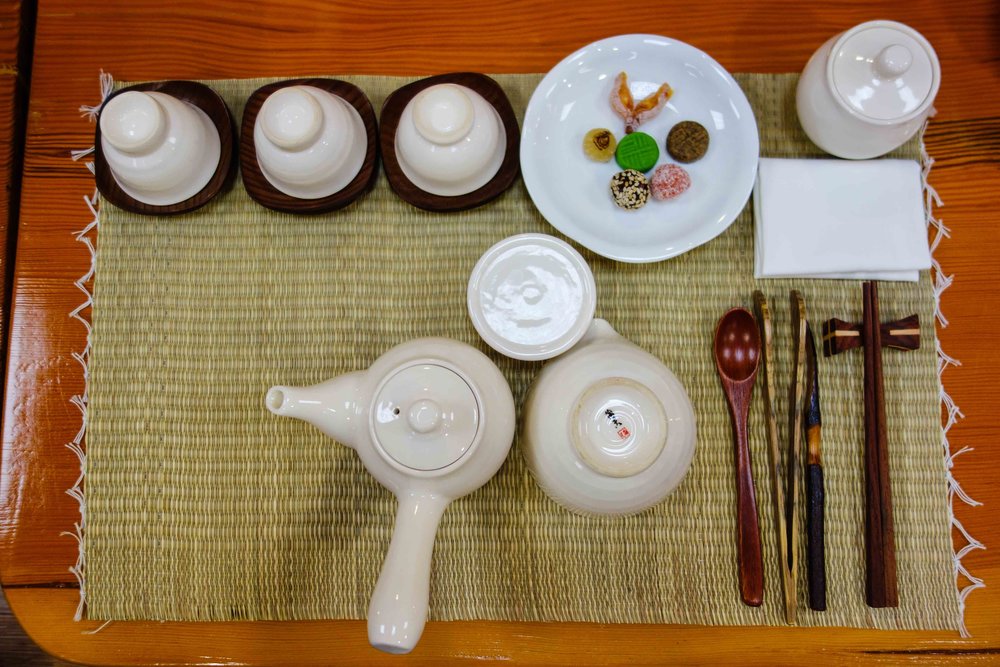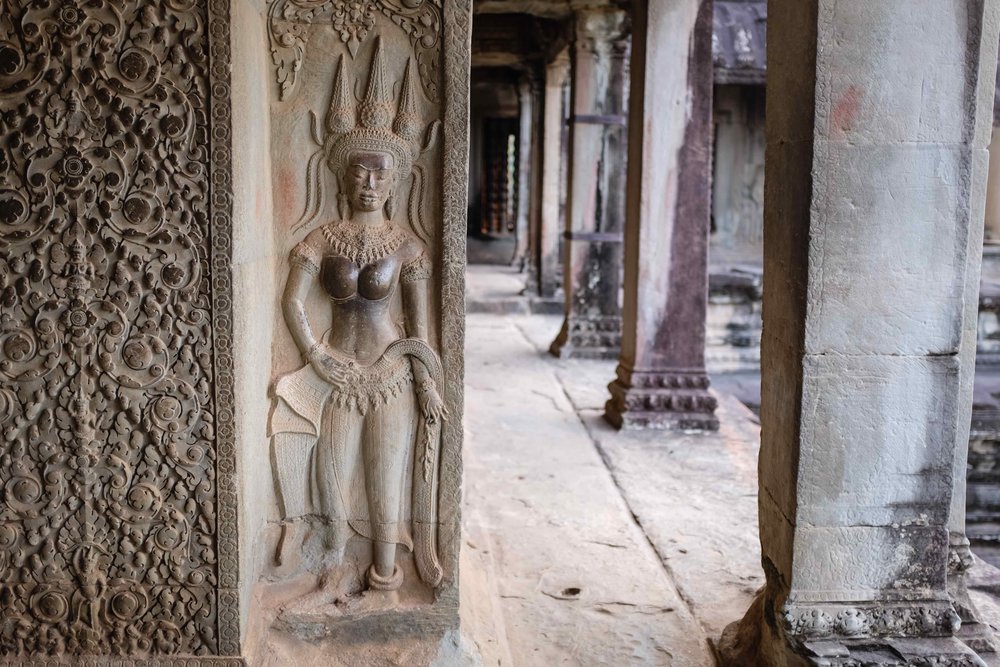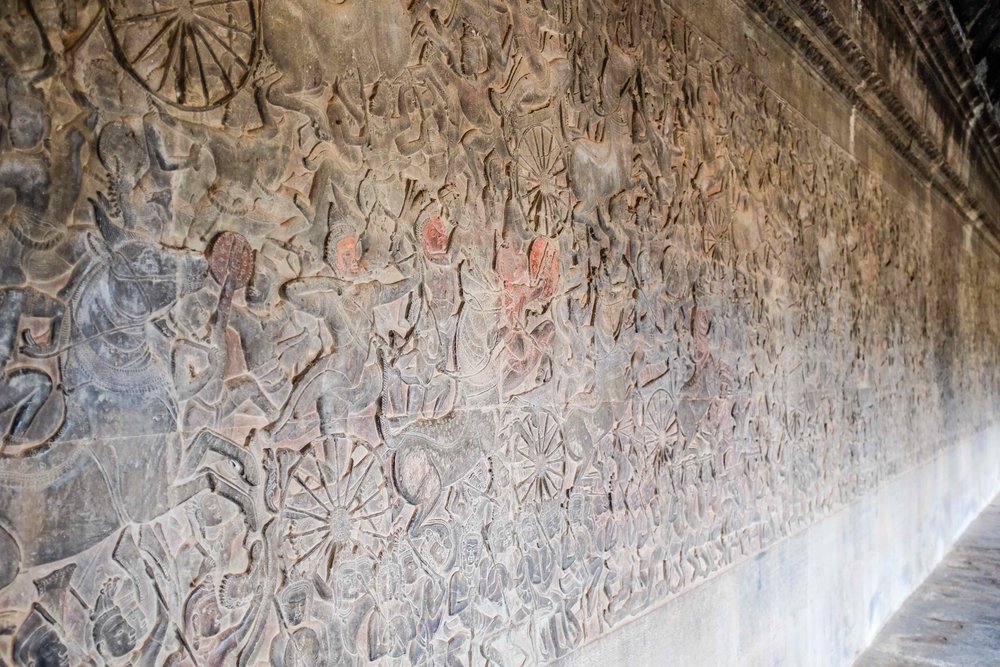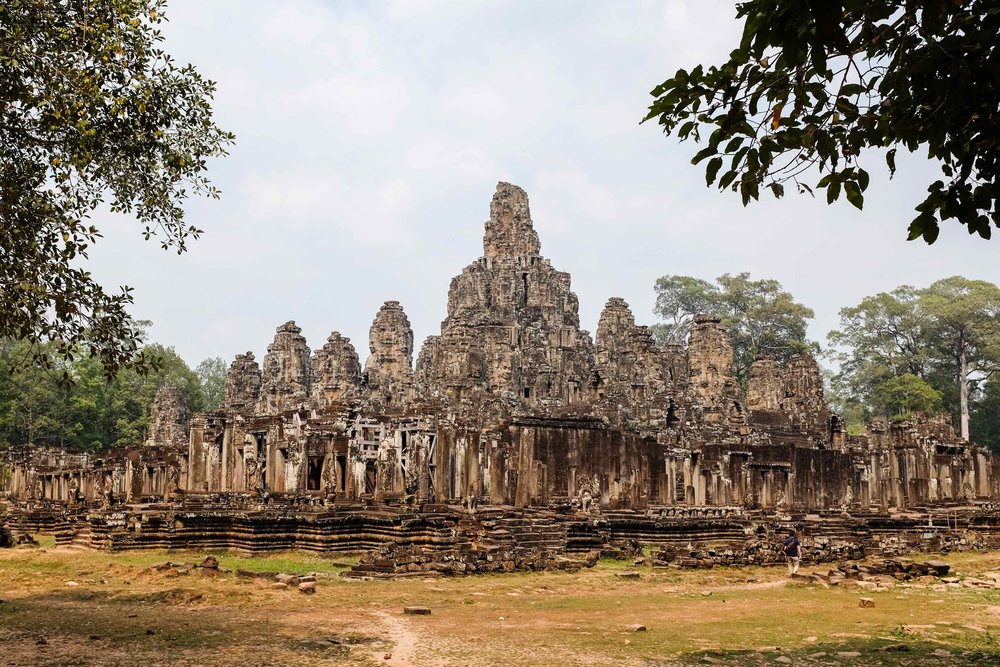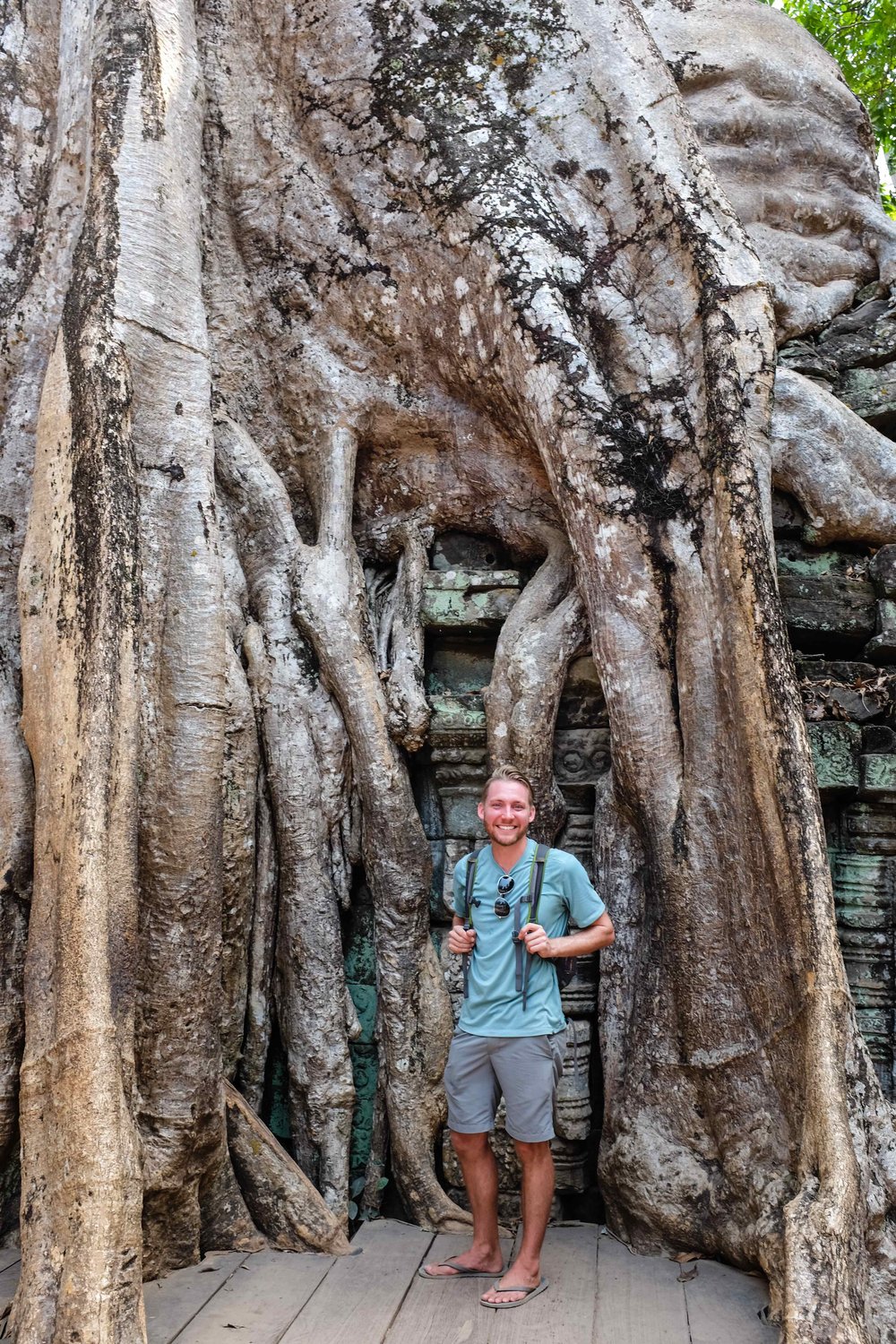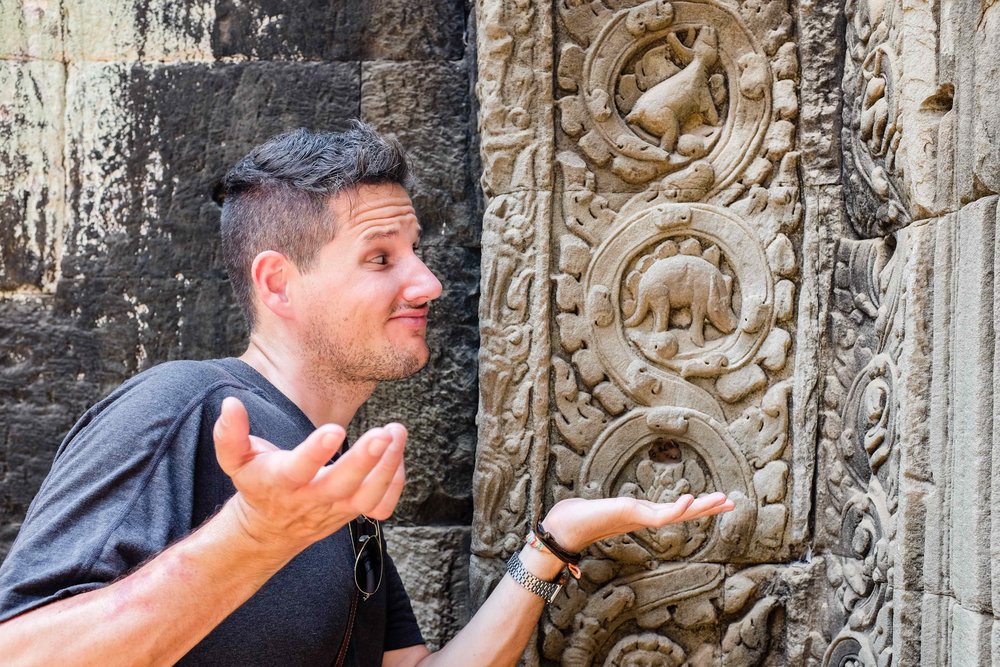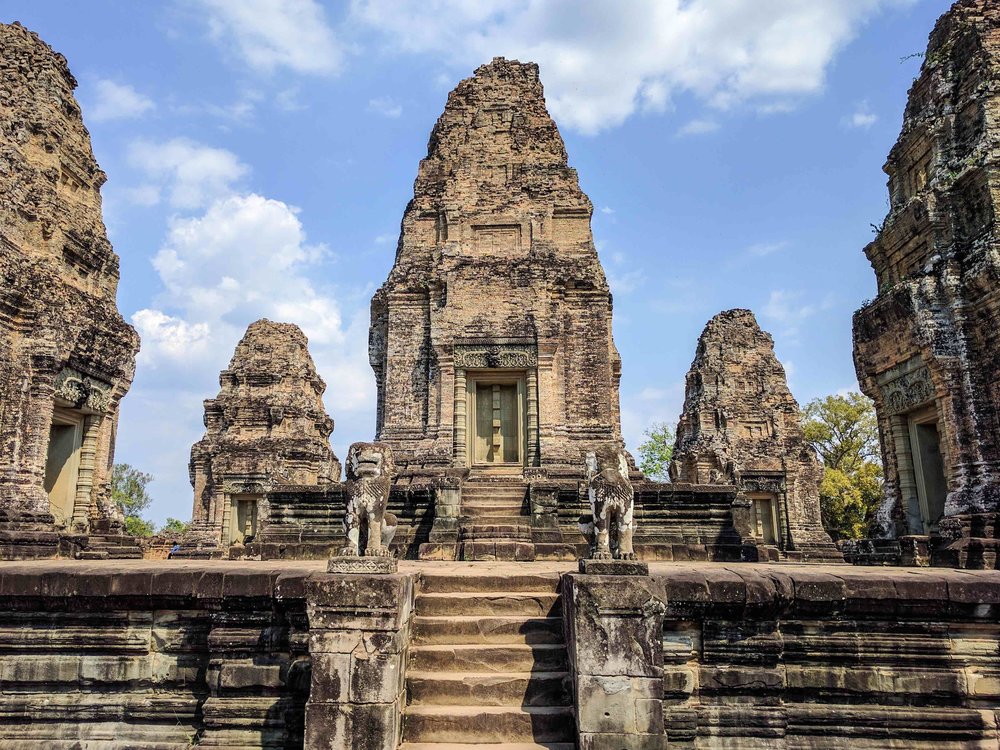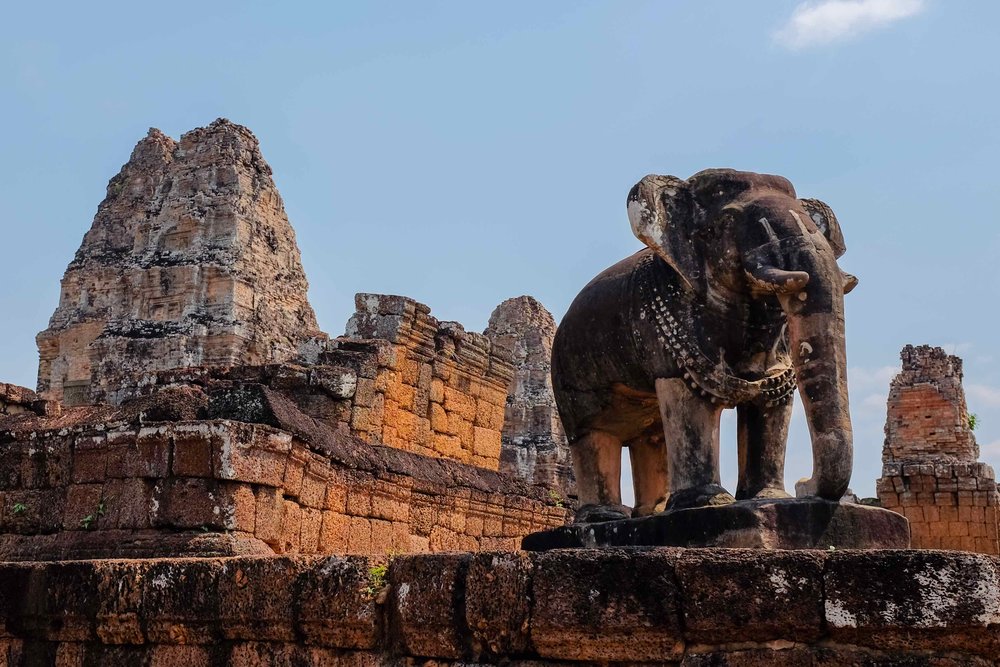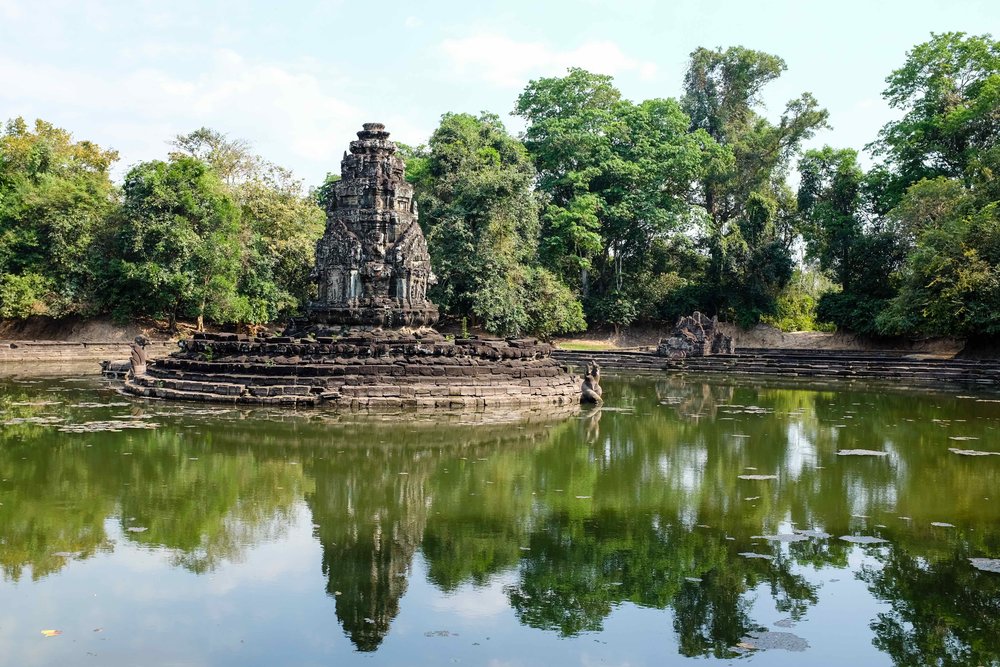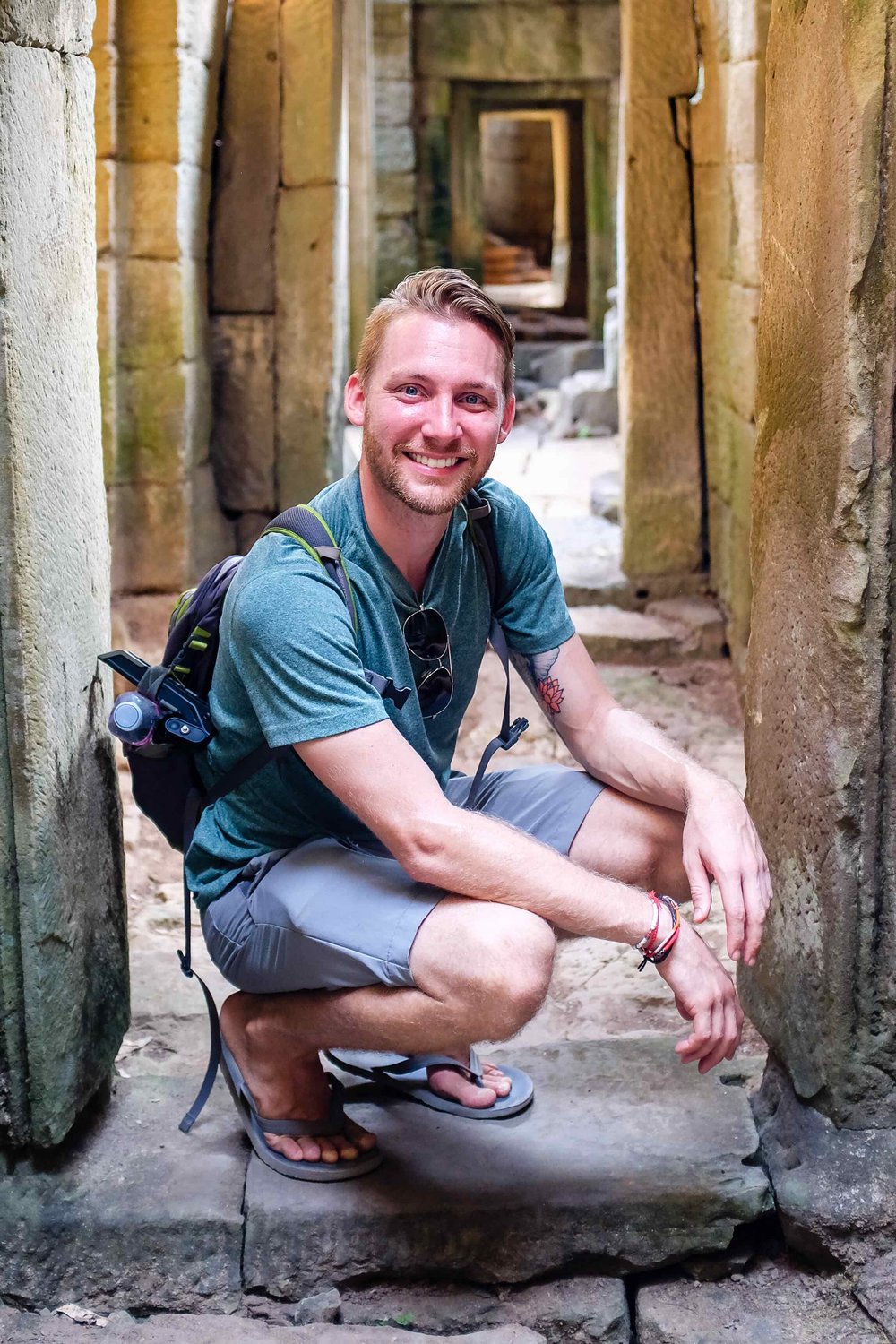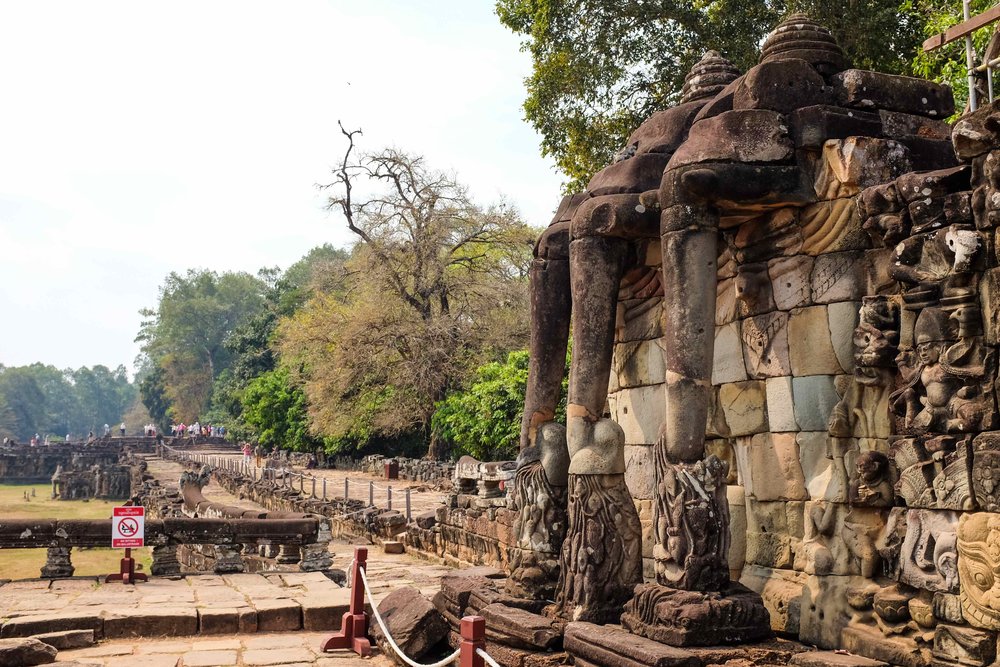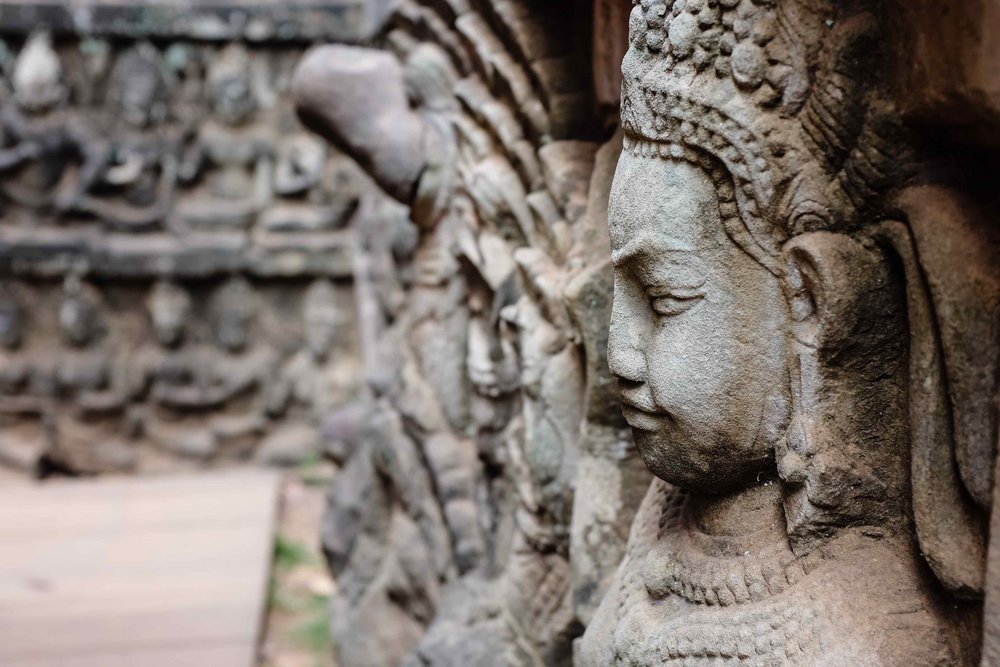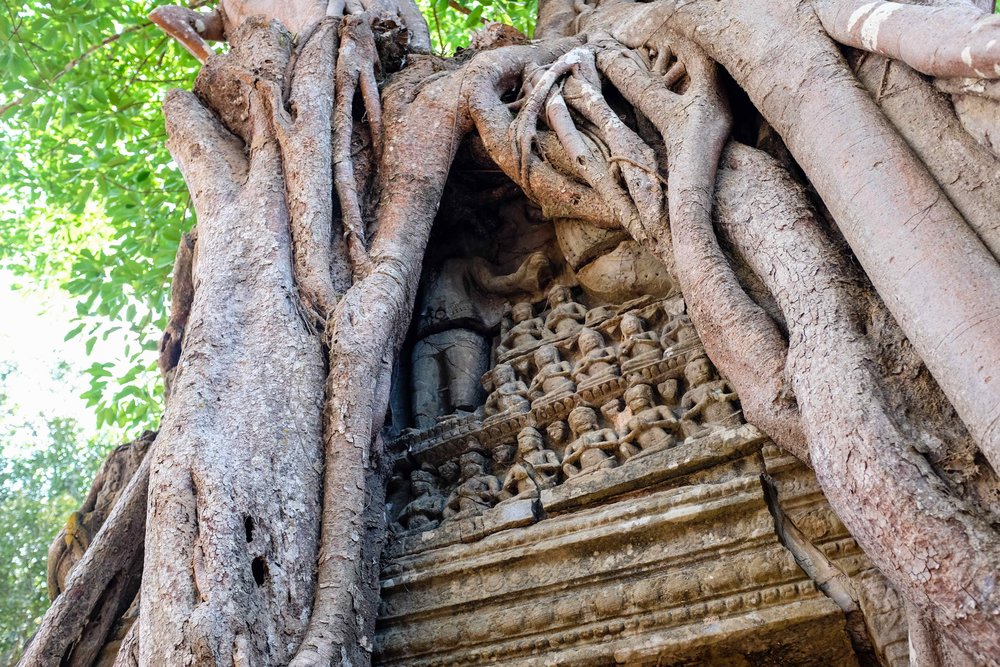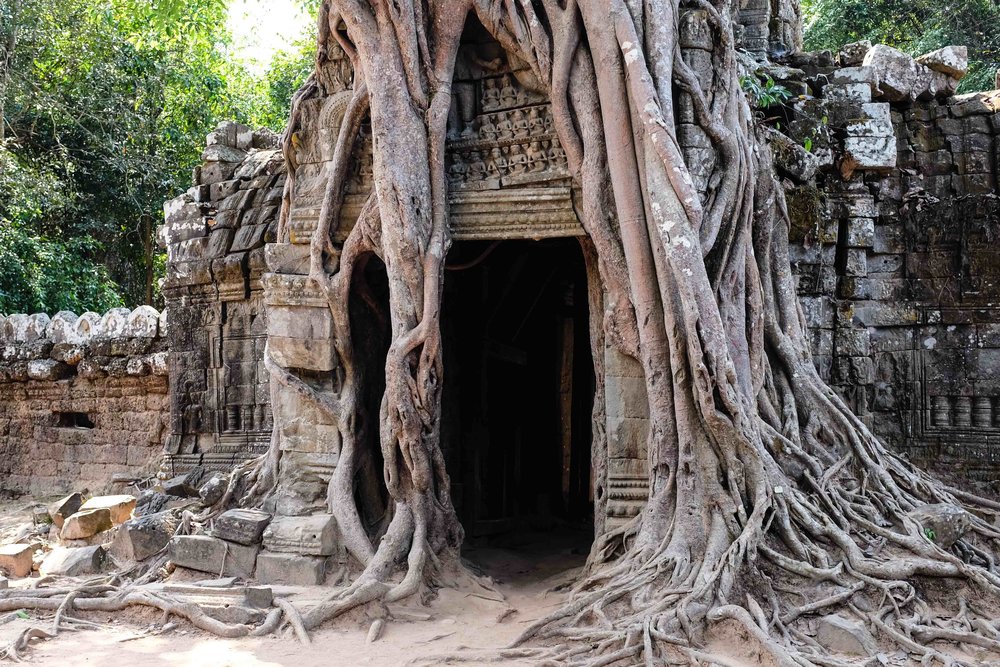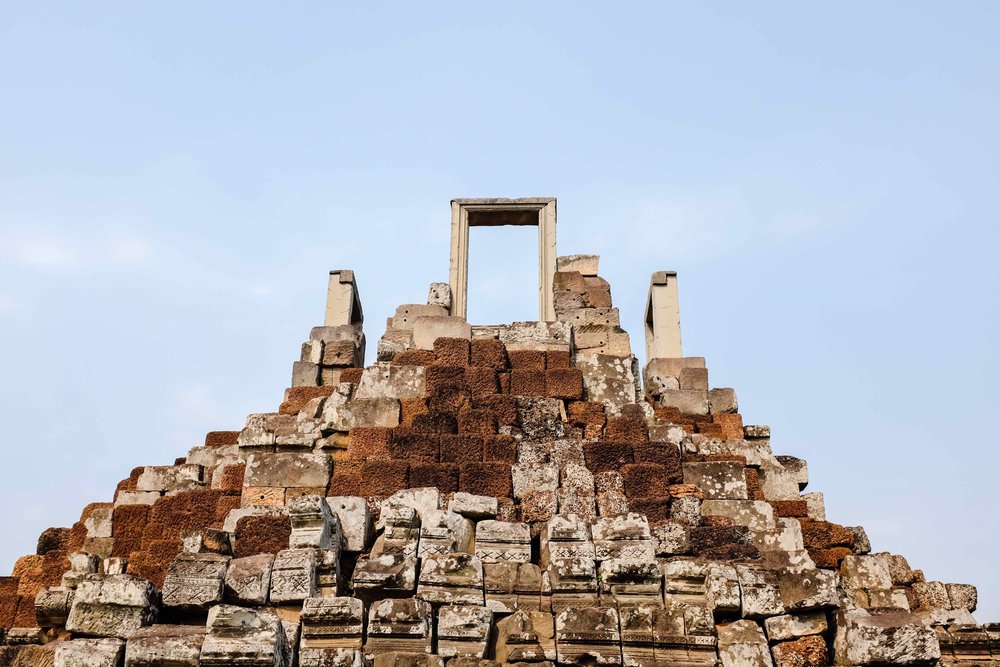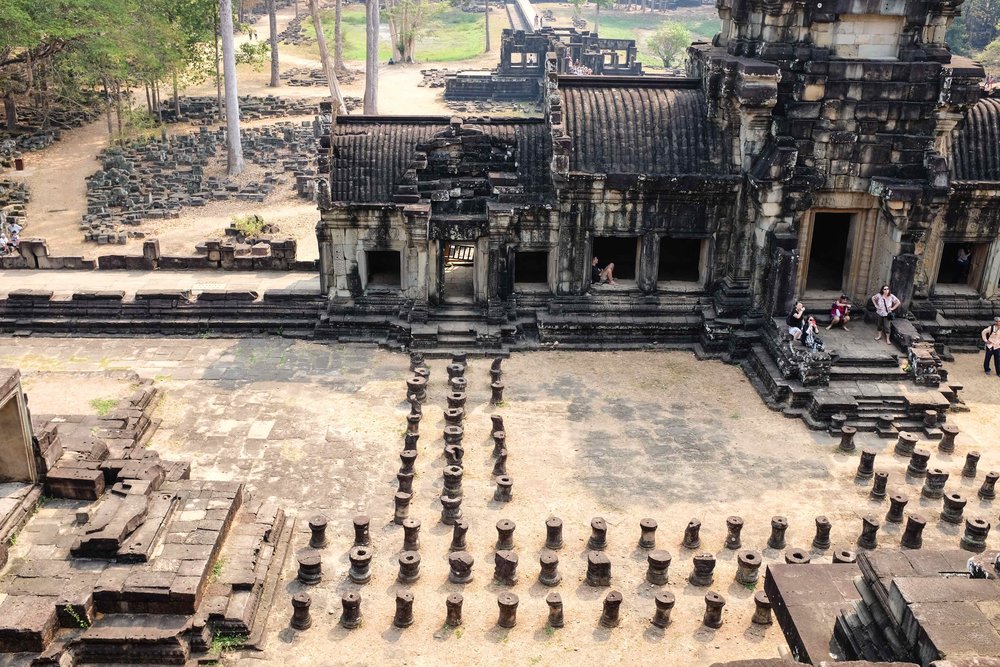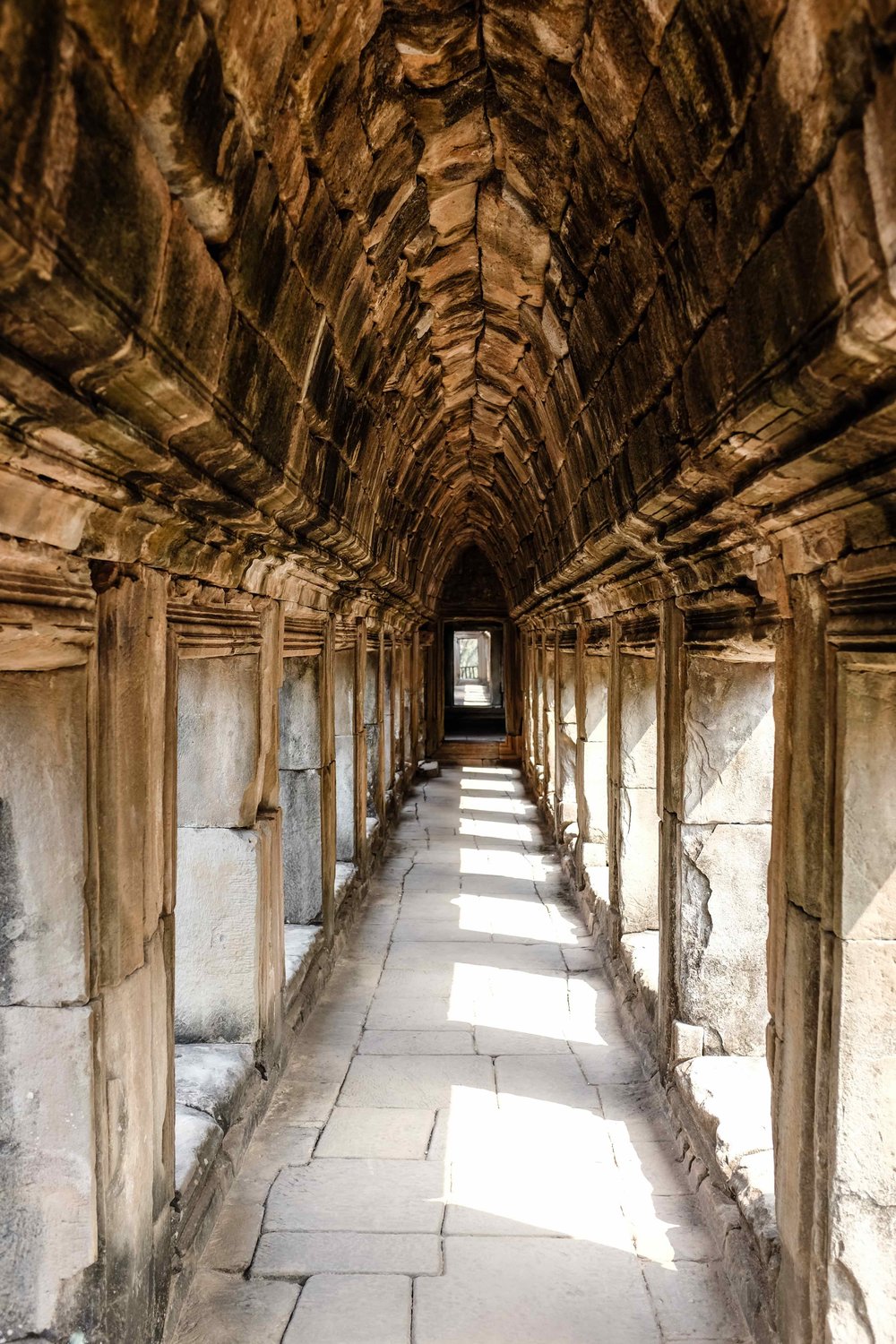While spending three weeks hopping around South Korea we had the incredible opportunity to stay in a traditional Buddhist Temple about 3-hours outside of Seoul, tucked away in a valley of the Sobaek Mountains.
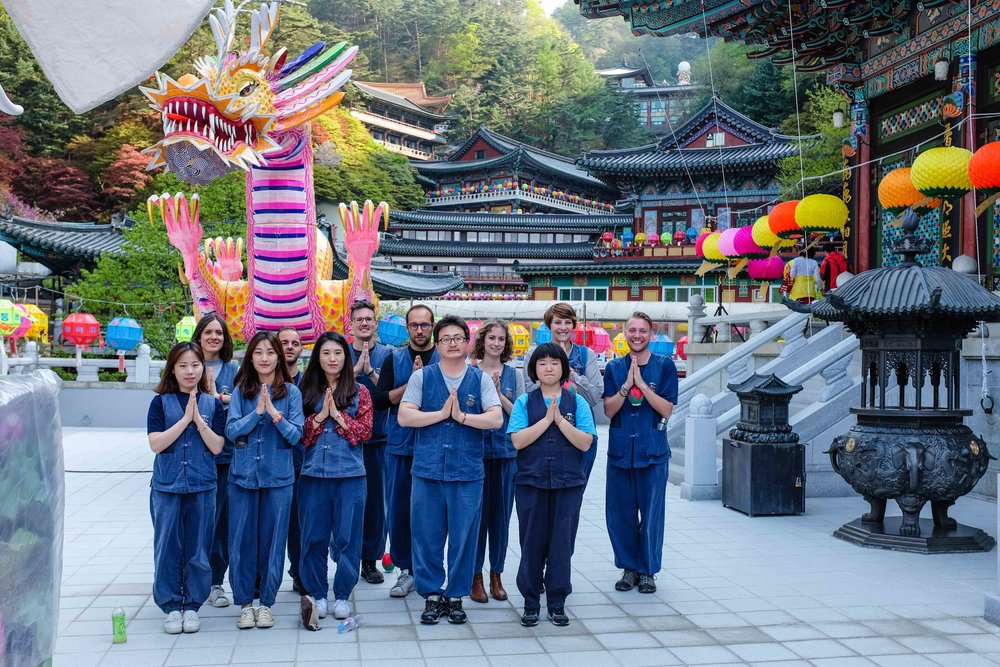
South Korea has many different temples that offer a temple stay program. The programs are meant to help people center themselves spiritually while learning more about the Buddha’s teachings. We ended up doing our temple stay at Guinsa Temple which practices Cheontae Buddhism, a sect of Korean Buddhism derived from a form of Chinese Buddhism called Tiantai. We were eager and excited to learn more about this form of Buddhism as well as clearing our minds and centering ourselves. We hope you enjoy this journey with us.
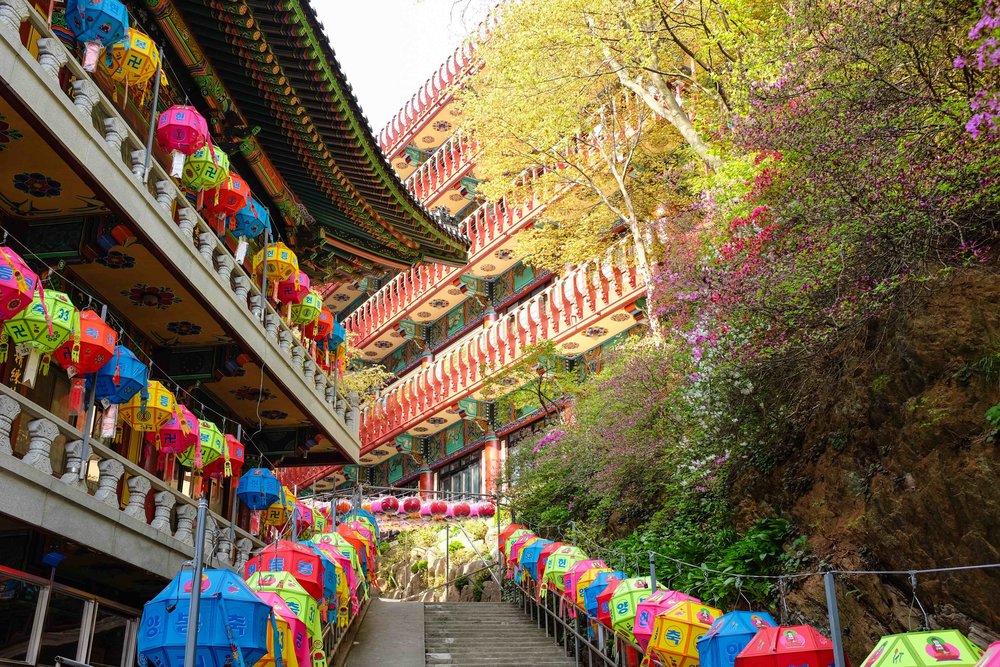
When we arrived, we were greeted by a massive amount of beautiful lanterns. We later found out this was because the Buddha’s birthday was in a few days. We were thrilled to have the colorful lanterns playing off the brightly painted temple buildings.

First thing on the agenda after checking in was a little arts and crafts. We made paper lotus lanterns and prayer beads. The lotus flower is very important to Buddhists, symbolizing purity of the body, speech, and mind, while the prayer beads are sometimes used to count the number of mantras recited, much like a rosary in the Catholic faith counts the number of Hail Marys repeated.
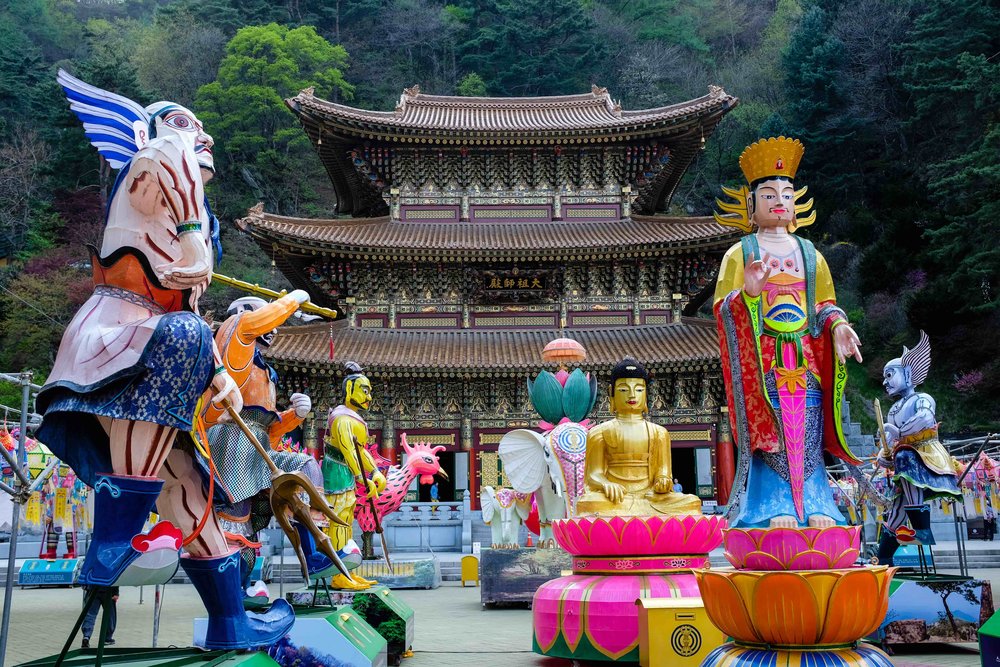
After arts and crafts, we were taken on an official tour of the Guinsa Temple complex. We saw the buildings where we would share meals, where the monks lived, where evening and morning prayer would occur, and the Great Teacher Hall, a three-tiered pagoda at the top of the complex. The Great Teachers Hall and surrounding grounds were decorated with larger-than-life paper lantern figures in celebration of the Buddha’s birthday.

Up at the top, we were challenged to calm our minds and take in the beauty around us. The valley was so beautiful as the various building dotted the landscape. We were already transported into a world so different from ours.

At the sound of the bell, we knew it was time for evening prayers. Our group gathered with the monks and other practicers of Cheontae Buddhism and began chanting and praying inside of the prayer hall. The praying was very hard at first. It consists of repeatedly standing, then falling into a kneeling position, followed by bending over and placing our hands and forehead to the floor, after which raising back to the kneeling position, then coming onto our toes as we stood, hands in the praying position with our palms together at chest height, and finally ending back in the standing position. We did this for what felt like 100 times in 60 minutes. Fortunately, it became less difficult each time since we were falling into the groove and the moves became more natural.

Next on the agenda was dinner. The Guinsa Temple serves hundreds of simple vegetarian meals three times a day for free. We joined in to eat with everyone else regardless of religion or ethnicity. One cool things we learned was that all of the food, from the vegetable to the kimchi, were cultivated and made by the monks.
Following our meal, we had a little free time before meeting back up with our monk to learn the art of meditation. Meditation is more than sitting in silence, it is a means of transforming the mind into being mindful. It helped teach us concentration, clarity, and positivity. It also helped us ask questions about ourselves and begin to become aware of those things that may be causing us hurt.

One of the ways were were taught to meditate was to sit in the full lotus position. We were instructed to sit with our legs crossed with both feet resting on top of the opposite knee, just like you see the Buddha doing in statues. This was difficult for us, so we adopted the half-lotus position, where only one foot rests on the opposite knee while the other was on the floor, much easier for a novice. The monk then when around straightening our backs to the proper posture. This definitely showed us we are in serious need of working on having better posture. Another form of meditation we learned was loud chanting. This was not our favorite because we were focusing on saying the words properly, rather than being mindful. After meditation, we played a few trust games to bring the night to an end.

Now that night as fallen, we headed out to see the temple gloriously illuminated. All of the lanterns were magical. We hiked our way from our dormitory through the complex in awe at all of is lights and we had it all to ourselves!

One of our favorite lanterns was the dragon outside of the prayer temple that provided us a light show. It dazzled us as it constantly changed colors from a crisp bright white to a fabulous rainbow array. It a real treat to explore the temple complex at night.
The next morning we had 3am prayer in the temple. This time Brad slept in and Kevin went alone to repeat the chantings and kneeling ceremony. It was way easier this time around. After morning prayer, it was back to the room for an additional few hours of sleep before waking up for another simple vegetarian meal.
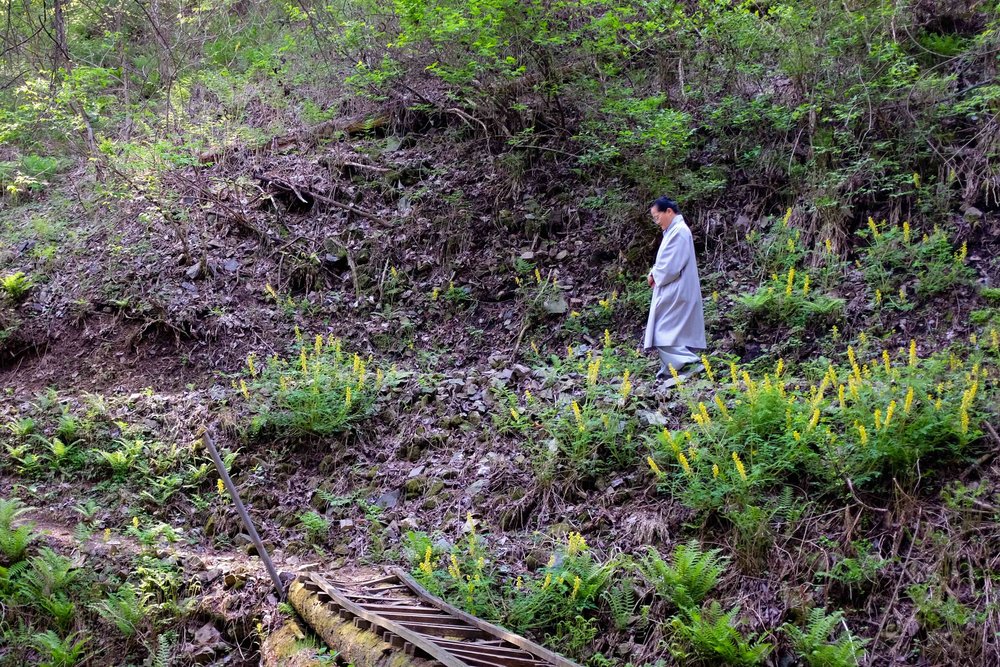
After breakfast, we joined back up with our monk and took a nearly 2-hour meditation walk through the mountains. It was a cleansing time where we pushed away all thoughts that came to our mind and just took in the silence and surroundings. It was so relaxing and cathartic. Note: all of the picture were taken on our walk back to the temple. We were not meditating at this time.

At the top of the mountain, we were encouraged to meditate anyway that made us comfortable. We both laid down flat on our backs with the morning sun beating down on us and fell into a calming state of meditation. This was much more comfortable than straining to sit upright. 😉

The last thing we did during our temple stay enjoy a tea ceremony with our monk. This was our favorite part of our journey. We learned the importance of the ceremony while being able to ask the monk any question we wanted. This was the most educational part of our stay. We learned so much more than just the tea ceremony and about Cheontae Buddhism, we were able to look inside of ourselves and learn more about us.
We are two en route to enlightenment
